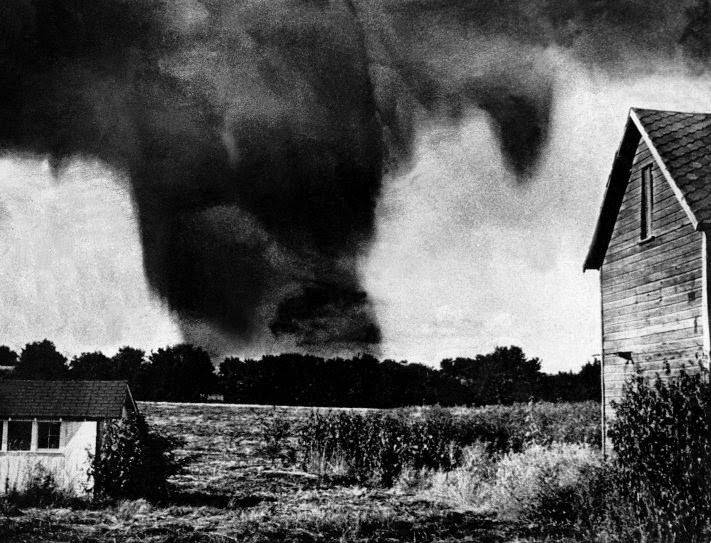Coal was discovered in Madison County as early as 1840 but when the railroad connected Springfield to East St. Louis, mining began in earnest. Many men from Troy worked for Donk Brothers Coal & Coke Co. The company sank a mines near Marysville, Collinsville, and Troy, which employed about 1,000 men by the time Joe was born. Joe's father Samuel J. Tilden Manley had moved to Troy from Big Island, Ohio, where he lived with his sister and brother-in-law and worked as a day laborer. He lived out the remainder of his life in Troy and worked for Donk Brothers as a miner for several years.
Walter Joseph Manley was the first child born to Tilden and Mary "Mollie" Blanche Riggin. I am pretty sure that in 1920, at the age of 15, Joe was an inmate at the Illinois State Home for Delinquent Boys, also known as the St. Charles School and Home for Boys.[1] According to the St. Charles Public Library website, "the purpose of the school was to provide boys with a strong education in both intellectual and vocational studies so that once released they could live a life of 'usefulness'." Additionally, the boys were given religious and military training.
 |
| Illinois State Home for Delinquent Boys opened in 1904; image courtesy of the St. Charles Heritage Center |
By 1927 Joe was back in southern Illinois, married to Mary Burke, and living at 906 Rock Road in East St. Louis. He was days short of his 22nd birthday when he was murdered.
 |
| From the front page of the 22 June 1927 Edwardsville Intelligencer; image courtesy of Ancestry.com |
Interestingly enough, there was not another mention of this incident in the newspaper. While Eddie McAteer was held for murder, he doesn't appear to have been convicted or even had a trial unless murder was so common in East St. Louis it wouldn't have warranted a mention in the newspaper. Joe lived long enough to give a statement to police. In it he claimed he'd never met McAteer before and his shooting was a case of mistaken identity. McAteer's story is much different. He claims he'd had trouble with Joe for a long time and Joe had threatened to kill him. This time Joe came at him with a razor.
So was Joe Manley murdered or did Eddie McAteer shoot him in self-defense?
Joe died in St. Mary's Hospital and was buried at the Troy City Cemetery.
I plan on contacting the Illinois Regional Archives Depository about the records of the coroner jury mentioned in the article to see if there was ever a murder trial.
_______________
[1]This is the only viable 1920 Census record for him unless he was living in another state far from Illinois. The only thing that gives me pause is the birth location of his parents.
HELD FOR MURDER OF TROY YOUTH
Joe Manley Dies After Statement Implicated Eddie McAtee in Shooting
Eddie McAteer, of East St. Louis, was held for murder by a coroner jury late yesterday afternoon in the death of Joe Manley, 21 years old, son or Mr. and Mrs. Tilden Manley of Troy, who was buried this afternoon at his old home. McAteer is 37 years old. The fatal shooting occurred in sight of Manley's home, 906 Rock Road, East St. Louis last Saturday night at 7 o'clock.
Manley died at St. Mary's Hospital Monday from three bullet wounds in his body. After the shooting McAteer surrendered at the police station, declaring he shot in self defense.
The jury found that Manley's death was due to a gun shot wound, in the chest, inflicted by Edward McAteer with murderous intent.
Stories on the killing of Manley are widely different. It is believed that McAteer was looking for another and killed Manley through mistaken identity.
Before Manley died he made a statement implicating McAteer and declared he was not acquainted with the assailant and never saw him before.
McAteer contented that he was attacked by Manley with a razor and shot in self defense. A razor was found in the ambulance that took the injured man to the hospital. The razor is a new one and it is claimed to be unlike the style Manley used.
Before his death Manley told police officers that he was about to enter his house when a man in a Buick coupe called to him. He said he went to the machine and the man in the car, whom he said that he did not know, said "you're John Pringle and I am going to kill you." Manley said that with this remark the man in the coupe pulled a revolver out of his pocket and fired three times. The bullets struck Manley.
Clay Farrell, an employee at Fill Motor Co. nearby, heard the shots and ran into the street. Farrell told police that he observed the Buick coupe, with no license plates, driving away and then saw Manley lying in the street.
When McAteer gave himself up at police headquarters he said that he had been having trouble with Manley for some time and that Manley had several times threatened to kill him. It was about one of these threats, McAteer declared, that he had come to see Manley. During the conversation, McAteer said, Manley displayed a razor and started to cut McAteer. It was then that McAteer fired the shots which resulted in the death of Manley.
Though Manley, before his death, declared that he had no trouble with anyone, McAteer claimed that he had trouble with the dead man for a long time.






















